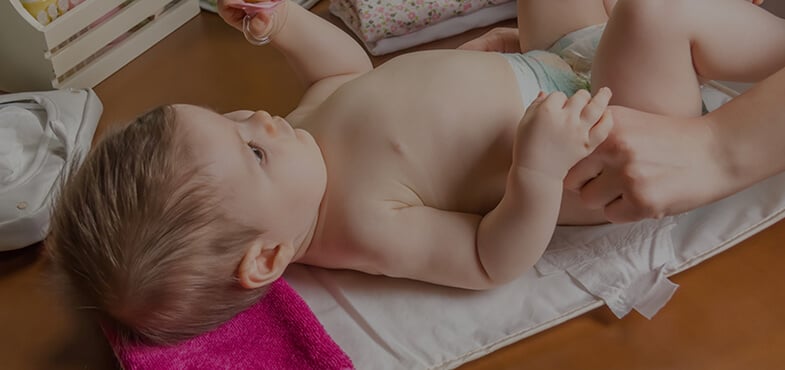Identify, prevent and treat nappy rash with this helpful guide from desitin.
50 to 60% of all babies will suffer from nappy rash at some time.
Nappy rash can lead to an increased frequency of crying, changes in eating habits and sleep patterns, agitated and restless
behaviour and sometimes less peeing or pooing to avoid pain1,2. Careful care when changing your baby’s nappy can help prevent
nappy rash.
What causes nappy rash
Bacteria
Urine & Faeces
Friction
Closed environment
What are the symptoms of nappy rash?
Sensitivity
Chafing
Flaking
Redness
How to treat nappy rash
Follow these three steps to treating nappy rash;
Cleanse your baby's skin with mild wipes or a warm, wet washcloth.
Keep your baby's skin as dry as possible.
Apply a thick layer of zinc oxide barrier ointment like DESITIN® Nappy Rash Ointment to the entire nappy area at each nappy change.
How to prevent nappy rash
Be careful not to apply your baby’s nappy too tightly
Let your baby go without a nappy as much as possible
Apply DESITIN® Nappy Rash Ointment with each nappy change
Change your baby’s nappy often
Choose the right-sized nappy
1. Atherton D, et al. RCM Midwives. 2004;7:288-290.
2. Jordan W, et al. Pediatr Dermatol. 1986;3:198-207.
DESITIN® nappy rash treatments provide relief your baby can feel by creating a barrier on contact that establishes the ideal soothing, healing environment.
Always read the label. Use only as directed.
If symptoms persist please contact your healthcare professional.
Mums around the world look to JOHNSON’S® to care for their babies
We are committed to working with mums, healthcare experts and scientists to ensure our products continue achieving the highest JOHNSON’S® baby standards.
Our commitment to healthy babies goes beyond our products
We take great pride in our initiatives that help babies grow up in a healthy community and a healthier world.
